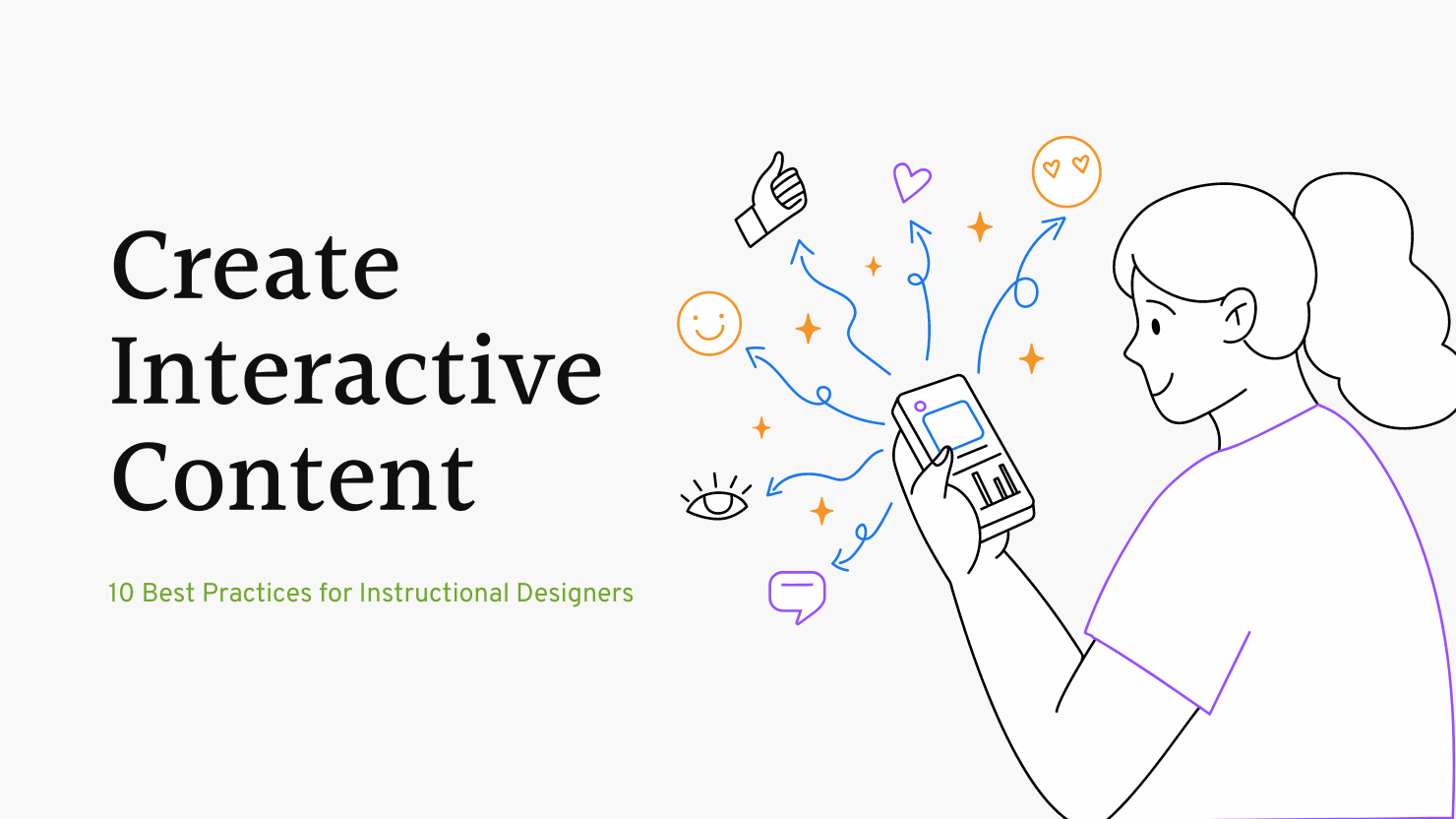
Engaging eLearning content is not just a nice-to-have; it’s essential for driving learner motivation and course completion. In a world where attention spans are dwindling, creating content that captivates and educates is a challenge that every instructional designer faces. In this article, we’ll dive into 10 proven best practices to ensure your eLearning content not only engages but also leaves a lasting impact.
1. Use a Variety of Multimedia
Incorporating multimedia elements such as images, videos, and audio can help to break up the monotony of text-based content and make the course more engaging. Multimedia can help learners to better understand complex topics by providing visual or auditory examples that demonstrate the content.
- Examples: Research by the eLearning Guild found that courses incorporating video content saw a 9% increase in completion rates compared to text-only courses. Tools like H5P, Camtasia, and Adobe Captivate can help you easily add multimedia elements to your eLearning modules.
2. Create Interactive Elements
Interactive elements such as quizzes, polls, and surveys can help learners actively engage with the content and test their knowledge. These elements provide learners with immediate feedback and reinforce key concepts, ensuring that the material sticks.
- Implementation Tip: Use tools like Articulate Storyline or iSpring Suite to seamlessly integrate quizzes and interactive components into your courses.
3. Ensure Content is Visually Appealing
Using a consistent color scheme, typography, and formatting can help to create a visually appealing and cohesive course. A visually appealing course helps to keep learners engaged and motivated throughout the content.
- Visual Design Tip: Maintain a consistent visual theme across all course materials. Tools like Canva or Adobe Spark can help you create polished visuals even if you’re not a design expert.
4. Use Storytelling
Incorporating stories or case studies can help learners to better relate to the content and understand how it applies to real-life situations. Stories make content more relatable and help learners see how the material is relevant to their own lives or work.
- Case Study: Consider sharing a story about how a company improved its productivity through effective eLearning, illustrating the impact of the practices you’re recommending.
5. Break Content into Digestible Chunks
Chunking content into smaller, more manageable pieces can help learners to better retain information and prevent cognitive overload. Breaking content into smaller chunks can also help learners to better focus on key concepts and avoid information overload.
- Practical Application: Use subheadings, bullet points, and numbered lists to break down complex information. This makes the content more scannable and easier to digest.
6. Provide Immediate Feedback
Providing immediate feedback on quizzes or assessments helps learners identify areas where they may need to review the content further. Immediate feedback also reinforces key concepts and keeps learners engaged.
- Feedback Tip: Incorporate detailed explanations for correct and incorrect answers to deepen understanding. Tools like Moodle or Canvas allow you to automate and customize feedback for each quiz question.
7. Incorporate Real-World Examples
Using real-world examples can help learners better understand how the content applies in real-life situations. Real-world examples help learners relate to the content and see its relevance in their work or personal life.
- Example Suggestion: Show how a specific industry, such as healthcare or finance, applies the principles you’re teaching. This makes the content more relatable and applicable.
8. Use Humor
Humor can be a great way to lighten the mood and make the content more enjoyable for learners. When used appropriately, humor helps learners relax and feel more comfortable engaging with the content.
- Guideline: Use humor sparingly and ensure it’s relevant to the content and appropriate for your audience. Avoid humor that could be misunderstood or distract from the learning objectives.
9. Ensure Content is Accessible
Ensuring that eLearning content is accessible to all learners, regardless of disabilities, is essential to creating an inclusive and engaging learning experience. Making content accessible ensures that all learners have an equal opportunity to engage with the content and learn.
- Accessibility Tips: Add captions or transcripts for videos, use alt text for images, and ensure that your color scheme has sufficient contrast. Test your content with screen readers to make sure it’s fully accessible.
10. Use a Conversational Tone
Using a conversational tone helps learners better connect with the content and feel as though they are having a conversation with the instructor. A conversational tone makes the content more relatable and engaging for learners.
- Tone Adjustment: Write as if you’re speaking directly to the learner. Ask questions, share personal insights, and use contractions to create a more relaxed and inviting atmosphere.
Conclusion
By following these best practices, you can create engaging eLearning content that keeps learners motivated and interested throughout the course. Ready to take your eLearning content to the next level? Start implementing these tips today and watch your learner engagement soar. With WordPress, you have the flexibility to incorporate multimedia, interactive elements, and real-world examples to create a dynamic and effective learning experience.
What challenges do you face when creating engaging eLearning content? Share your thoughts in the comments below or join our community for more tips and advice!
